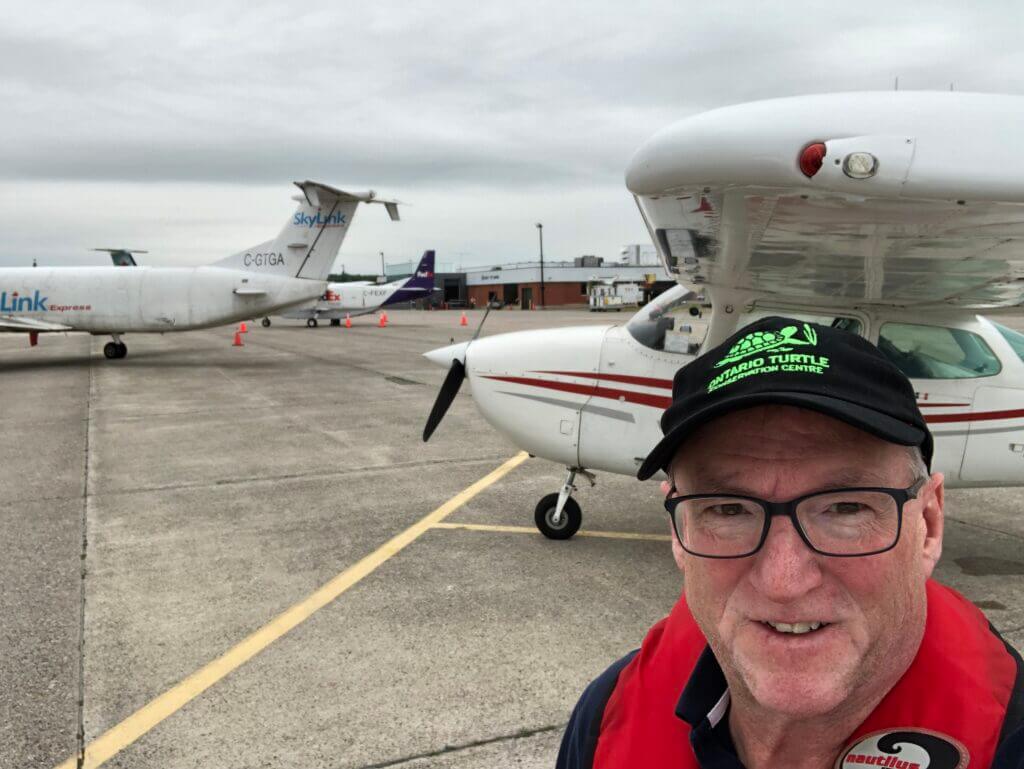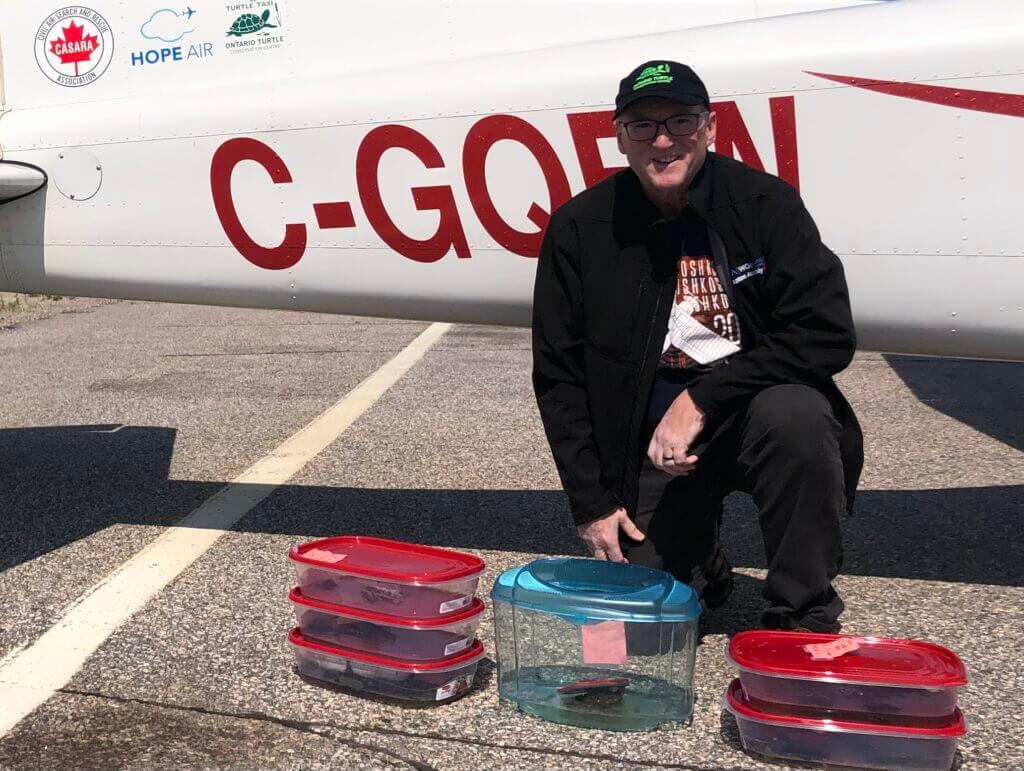Estimated reading time 8 minutes, 8 seconds.

It was a summer day like any other, except the Turtle Taxi email chain was ringing off its metaphorical hook.
Volunteer conservationists across southern Ontario had located a cluster of injured turtles that needed emergency veterinary care at the Ontario Turtle Conservation Centre (OTCC) facility in Peterborough, about 150 kilometres east of Toronto.
In minutes, the 911-style network of animal ambulance pilots and drivers sprang into action. Wayne Harvey saw the emails arrive at his computer in St. Thomas, Ont., a small city near London, and told the other Turtle Taxi drivers he’d take his Cessna 172 Skyhawk on a milk run.
“Probably five emails went out in the same day,” said Harvey, a retired auto worker who has two part-time jobs — including one as the fixed-base operator at St. Thomas Municipal Airport — to pay for his love of flying.
“Is there an airport close by? If so, I’ll put my hand up for it,” he said. “If you can get somebody to bring the turtle to the airport, I will fly in and pick the turtle up.”
Land-based Turtle Taxis carried the shelled lizards in Rubbermaid containers to airports in Kincardine, London, Guelph and Brampton that day. Harvey loaded them carefully into his Cessna and flew them the rest of the way to Peterborough, sporting a green Turtle Taxi decal on the aircraft’s white fuselage.

“In the summer, I try and fly three times a week,” said Harvey, who has about 2,050 flight hours under his belt since he started pilot training in 1997.
“In the winter, I try and get in at least once a week. So, I’m doing something I would be doing anyway, but it’s given me a purpose for flying around. I’m not really into just flying in circles for the sake of it.”
Quirky though it seems, the Turtle Taxi network — which includes two general aviation pilots, dozens of land drivers, and plenty of room for more — is a vital partner in Ontario’s turtle conservation efforts.
About half of the world’s 300 turtle species are at risk of extinction, according to the OTCC, a registered charity devoted to protecting and conserving Ontario turtles and turtle habitats. As a result, every turtle rescue is important.
“They’re amongst the most endangered [vertebrate] creatures on the planet,” said Dr. Sue Carstairs, a veterinarian who serves as both executive director and medical director of the OTCC.
“All eight of our Ontario species are now considered at risk, and it’s all due to human intervention, like roads and habitat loss and that sort of thing … they’ve been around longer than dinosaurs — over 200 million years.”
As conservationists, the OTCC and its volunteers believe the principle of saving endangered species is inherently good and important work; but turtles are also among the most important elements of Canada’s wetland ecosystems.
“In Canada, we’ve lost 70 per cent of our wetlands already,” said Carstairs. “Obviously that’s important to the turtles, because that’s where they live; but it’s where our drinking water comes from. If we destroy the habitat there, then we’re harming ourselves.”
General aviation pilots are a small part of the Turtle Taxi network, which primarily involves a chain of land-based transport, often with multiple handoffs among several Ontario communities on the way to Peterborough. Then, after the veterinary care is completed and the turtles are ready for a return to the wild, volunteers deliver them back to their original habitat.

Harvey flies only four or five times a year for the charity, in part due to fuel costs; but his efforts are extremely important for reaching injured turtles in remote areas or expediting emergency transport over long distances.
“When we need them, it’s invaluable,” said Carstairs. “We try not to have to use utilize them too much, but literally, it’s a lifesaver when we do need them.”
Harvey began flying for the Turtle Taxi network about five years ago, part of his busy schedule as a volunteer pilot for Hope Air and the Civil Air Search and Rescue Association. At first, the concept seemed weird and intriguing; now, it’s a fun and meaningful part of his pilot’s life.
His longest Turtle Taxi flight to date carried him to Dryden, Ont., near the Winnipeg border, about 978 nautical miles from Peterborough.
“I’m always looking for an excuse to fly,” he said. “What I find along the way is, everybody that you come across has a passion for helping the turtles, and everybody is so appreciative.”
“It feels terrific knowing I’m making a difference,” he added. “If we can help them survive in our developing world, where we keep taking over their habitat, and get them back to where they originated from … it’s kind of like completing the circle of life.”









What kind of turtles are you transporting??